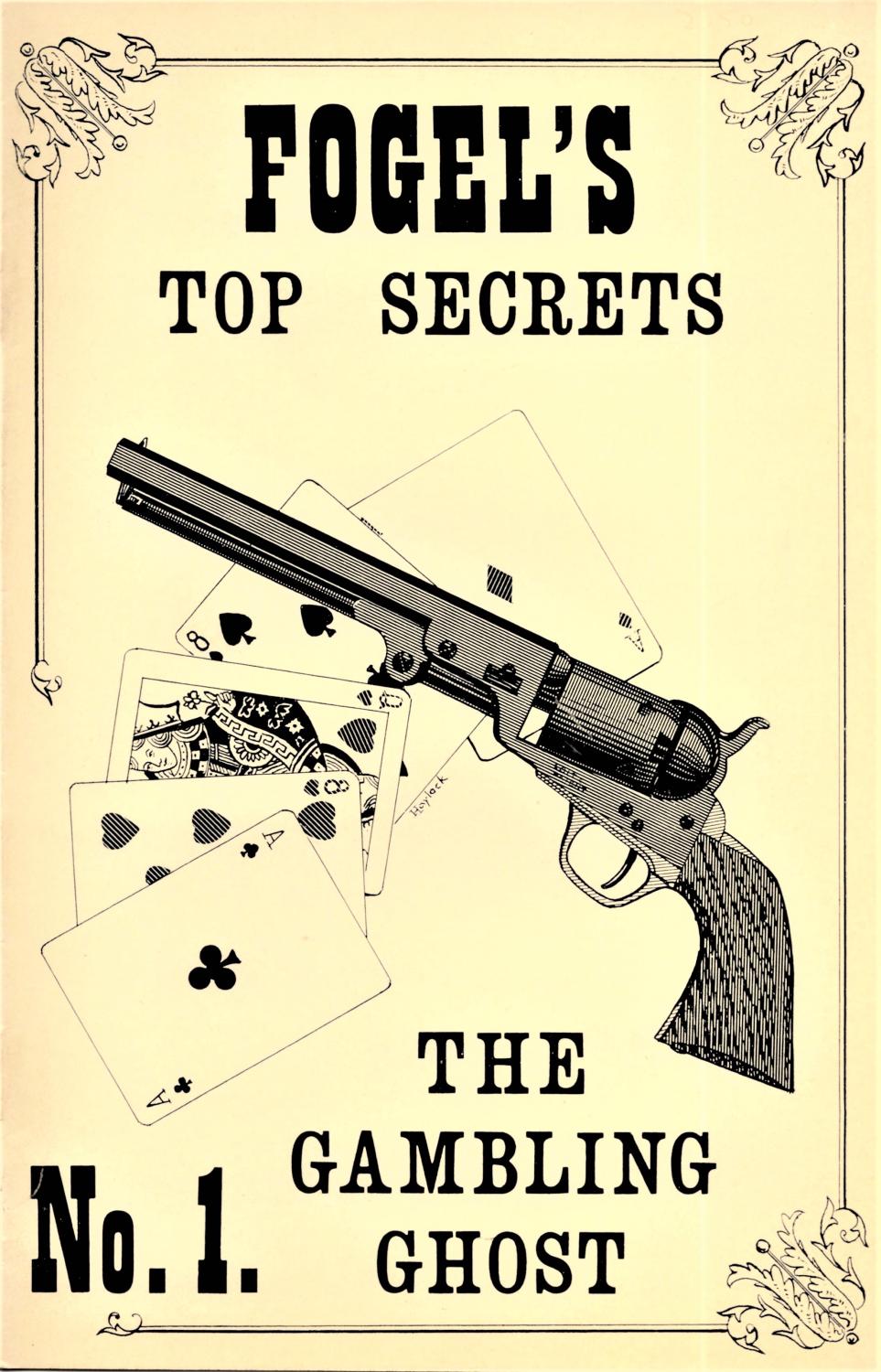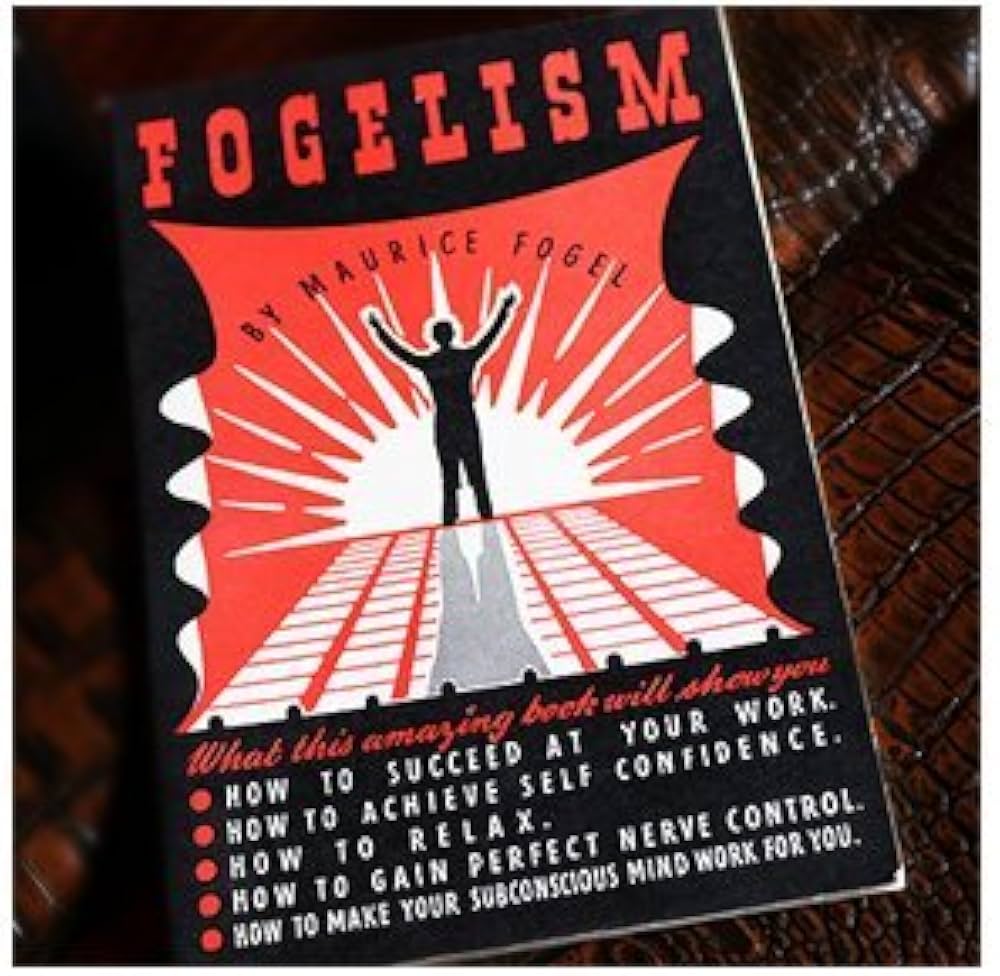
THE AMAZING FOGEL
(1911 – 1981)The Sensational Showman of British Mentalism
Humble Beginnings and a Passion for Performance
Maurice Fogel was born on July 7, 1911, in London's East End, the eldest of seven children to Polish-Jewish immigrants Nathan and Malka Fogel. Life was modest—his father worked first as a baker, then as a tailor—and young Maurice grew up surrounded by the working-class grit of early 20th-century London.
Fogel's early fascination with magic began in the local library, where he discovered Professor Hoffmann's books. That curiosity quickly developed into an obsession. He gained a reputation for performing tricks at school and was soon asked to entertain classmates at the end of each term. Around this time, he became captivated by the infamous bullet catch illusion—particularly the fact that even Houdini had never dared attempt it.
Training with a Master: Rameses the Eastern Mystic
At 14, Maurice joined the Oxford and St George's Boys' and Girls' Club, where he found his first regular performing outlet. His mother hoped he'd become a rabbi, while his father preferred tailoring. However, recognising Maurice's talent, his father reached out to family friend Albert Marchinski—better known as Rameses the Eastern Mystic.
Rameses offered young Fogel a role in his sideshow. This experience would prove life-changing. Performing on the streets, Maurice learned to stop crowds, entertain them with hypnosis and magic, and coax them into the tent for the whole show. He quickly realised that you didn't eat without ticket sales—a lesson that grounded him in the importance of marketing.
It was here he also learned the value of theatre. He began taking small tricks like the Wine and Water effect and transforming them into large-scale stage routines. Working with Rameses also introduced him to stage hypnosis, including a memorable routine involving lead boots that prevented a hypnotised Fogel from tipping forward.

The Magician's Club and Finding His Voice
At age 19, with the support of Alec Simpson (of Simpsons of Piccadilly), Fogel joined The Magician's Club. Here, he met seasoned professionals and honed his craft. He also became close with fellow magician Robert Harbin.
Over the next five years, he experimented with styles and temporarily changed his stage name to "Vogel." He performed card and coin tricks, explored traditional illusions, and tried different personas, but he was still searching for his true performance identity.
First Big Break and the Birth of a Mentalist
In 1937, at 26, Fogel entered and won a talent competition at Collins Music Hall. The prize—a week's engagement at two venues in Brighton and Wigan—marked the official start of his professional career.
At the time, Fogel performed a standard magic act. However, an unexpected twist would change his life while working at the Theatre Royal in Blyth, Northumberland. Desperate to extend the show, the producers asked Fogel to lengthen his routine. Without additional props, he turned to notes he had previously jotted down on psychic experiments and mentalism effects.
The result? His first stage is the mentalism act.
Though the first performance was rough—he was nervous and forgot lines—he received feedback from fellow cast members trained at RADA. Incorporating their advice, his performance quickly improved. The audience responded enthusiastically, and the producers asked him to drop the traditional magic altogether and stick to mind reading.
Wartime Service and Mentalism on the March
Fogel served in the army during WWII, where he was eventually transferred to the "Stars in Battledress" entertainment unit after meeting Corporal Henry Lewis. The two became lifelong friends. Military service made transporting props difficult, so his one-person mental act, now honed and simplified, proved perfect.
During the war, Fogel performed under different names—Casso and Casandra—to add exotic flair. His confidence as a mentalist grew, and his reputation began to spread.
The Fogel Road Show and The Rise to Fame
In 1947, at the Grand Theatre in Bolton, Fogel unveiled a fully developed one-person mentalism act. The Fogel Road Show was born. It incorporated a mix of mind reading, illusions, and hypnosis. Notable segments included:
- Vanishing Nude
- Through the Eye of a Needle
- Cheating the Gallows
- The Bullet Catch
- Russian Roulette
- Spirit Cabinet Seance
He was among the first to combine traditional magic with mind reading on the UK variety circuit, creating a new benchmark in mental performance. His timing, pacing, and stagecraft were immaculate, making simple effects seem miraculous.
The Bullet Catch: Danger Meets Drama
Fogel's most famous routine was his innovative version of the bullet catch. Instead of catching a single bullet, he used six rifles—five loaded, one blank. After mixing them up, one was randomly selected and fired directly at Fogel's heart. The others were aimed at plates behind him.
Moments before the firing, Fogel would step forward and say to the audience:
"It occurs to me that in a few moments, I may be lying dead or dying on the floor, unable to hear your reaction. Would I be presumptuous to ask to hear your applause now?"
The crowd would erupt into applause. Then—BANG!—five plates shattered, and Fogel staggered back. Gasps filled the theatre before he composed himself and took his bow.
This blend of suspense and wit defined Fogel's unique brilliance.


International Travels and Publicity Genius
Fogel toured extensively, performing across the UK, Africa, and the US. In 1950, he travelled to America, where he befriended bandleader and magician Richard Himber. Although he struggled to find work in the States, he returned to England the following year and resumed performing in various private engagements.
His public stunts—especially at conventions—were often headline-worthy. In 1949, he published a booklet titled Fogelism, which explored relaxation, subconscious thought, and applied psychology. His act wasn't just magic—it was framed as an exploration of the human mind.
Fogel's routines often included:
- Cheating the Gallows – Played more for comedy than suspense.
- The Houdini Séance – A theatrical tribute to spiritualism.
- Russian Roulette is often more terrifying than the bullet catch.
Later Years and Legacy
As variety theatre declined, Fogel shifted to cruises and Butlin's holiday camps. By the 1960s and 70s, he was a staple performer aboard P&O cruise ships, where his one-person show remained a consistent draw.
He died of a heart attack on October 30 1981, while waiting for a train at Golders Green Station—still carrying his blackboard and prop case, en route to a performance for friend and fellow magician Terry Seabrooke.
What Made Fogel Special?
Maurice Fogel was more than a magician. He was an actor, a psychologist, and a showman. His mastery of presentation and timing elevated basic methods into something unforgettable.
He will be remembered for his talent and originality, warm personality, and gracious spirit. His contributions to mentalism paved the way for countless performers who followed.
References:
* Chris Woodward & Richard Mark. Maurice Fogel. In Search of the Sensational.
* An interview with Fogel appears in Corinda’s 13 Steps to Mentalism along with many of his routines.
Read the full original article from The Magic Circular DOWNLoAd HERE
Read moe on WIkipedia here










